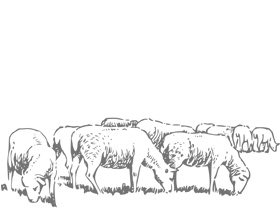| |
After a long winter in southeast Iowa, we’re ready to move our flocks to pasture and begin grazing fresh, green forage. Before we do, we need to make sure that our fences are ready, which means maintenance. Maintenance now means less downtime and hassles later.
Electric netting maintenance checklist:
- Repair broken conductors using Litz-Clips® or brass ferrules. A netting repair kit includes all of the essentials for patching tears and holes made by animals, weed-eaters, lawnmowers and whatever else may have damaged the fence.
- Recharge and check energizer batteries. Place solar units in the sun for a day or two to recharge their batteries. Use a trickle charger on spare DC batteries. Test with a Digital Battery Meter. 12.6V and up is fully charged. Replace batteries that hold a 12.2V charge (40% charge) or less.
- Replace broken support and line posts and gates.
New to electric net fences?
Premier’s electric netting is well-suited for rotational grazing—it’s quick to install, durable and adaptable to dips and curves in difficult terrain. It is an electrifiable, prefabricated, portable fence that arrives at your door as a complete roll with the line posts already built into the fence’s mesh. A standard roll (164 ft) including posts weighs only 23 lbs. You will need a fence energizer to electrify the net.
Common uses…
- Keeps in—poultry, goats, pigs, sheep, cattle, dogs and more.
- Keeps out—deer, bears, coyotes, foxes, stray dogs, skunks, opossums, raccoons and other nuisances.
- Easily rotate livestock to fresh grass.
- Use as a wildlife boundary around gardens, beehives, orchards and vineyards.
With proper planning, installing your own fence doesn’t need to be intimidating. Learn how to effectively use electrified netting with these helpful articles:
|
|

|
| |
|
What is Rotational Grazing?
|
| |
|
Now that you have the net on your farm, what’s the best way to install it for rotational grazing? Where do you put the energizer, the corners, and the supports?
|
| |
|
|

|
| |
|
Fencing FAQs
|
| |
|
We field a number of calls each day from future and new users of netting. Here are the responses to some of our fence consultants’ frequently asked questions.
|
| |
|
|
|
|
| |
|
|
